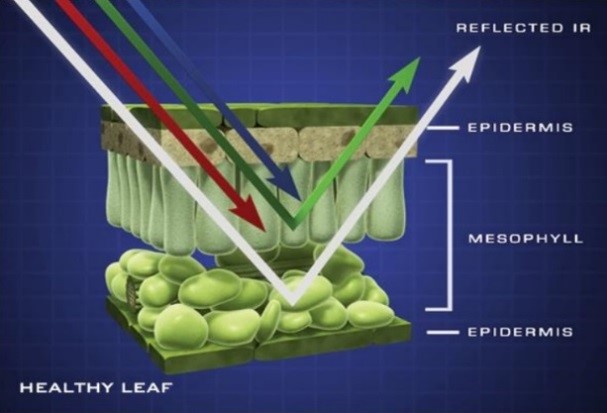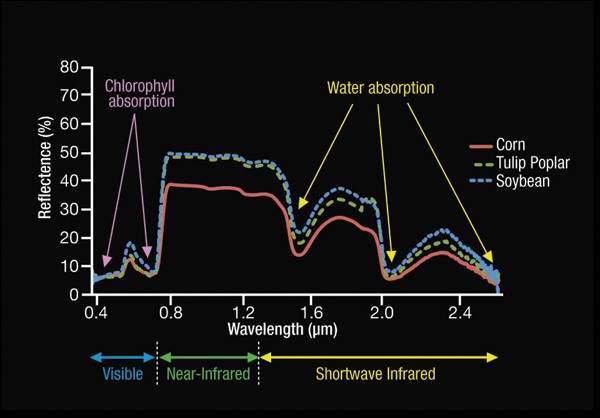Sciences of Remote Sensing

In simplest terms, remote sensing is the study of objects without touching the object. Our eyes are good remote sensors by telling us what an object is, what it may feel like, and even what it may smell like. The issue with our eyes is we see only a very small segment of the electromagnetic spectrum. There is so much energy and information that surrounds us that we cannot see. The image above shows how energy in the electromagnetic spectrum reacts with a typical plant leaf. Energy in the blue and red wavelengths is used by photosynthesis to create food for the plant. The plant does not need energy in the green wavelength so the leaf reflects that back out and that’s why we see the color of leaves as green. NIR energy is also not used by the plant and strongly reflects it back out. We cannot see NIR energy with our eyes but it’s all around us and contains valuable information about the health and vigor of the plant.

The electromagnetic spectrum energy graph of a plant leaf above shows that small visible area we can see with our own eyes between 0.4 and 0.7 micrometers. The rest of the energy we cannot see, but it contains valuable information in the Near IR and Short Wave IR about the health and vigor of a plant.
UAVs can carry a variety of sensors depending on the application. For agriculture we usually fly visual cameras like the one on your smart phone to multispectral sensors. Several other sensors are being tested for use in agriculture so the future is changing rapidly to better help understand our crops from above.
Images provided by NASA and used with permission.

